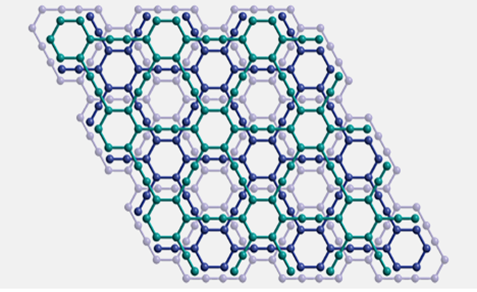A First: Synthesized Graphyne Created
There’s been a push for the last decade to synthesize graphyne, but success to date was limited. New research from the University of Colorado Boulder published in Nature Synthesis, however, has the potential to open new possibilities for electronics, optics, and semiconducting material research.
The most well-known carbon allotropes are graphite and diamonds, both created from sp2 carbon and sp3 carbon. Although scientists successfully created various allotropes over the years, including fullerene and graphene, the known methods didn’t allow for different types of carbon to be synthesized together in any sort of large capacity. Graphene creation requires greater capacity. Scientists speculate that graphyne has unique electron conducting, mechanical, and optical properties.
Using a process called alkyne metathesis—which is an organic reaction that entails the redistribution, or cutting and reforming, of alkyne chemical bonds (a type of hydrocarbon with at least one carbon-carbon triple covalent bond)—as well as thermodynamics and kinetic control, the group was able to successfully create what hasn’t been made before: A material that could rival the conductivity of graphene but with control.

